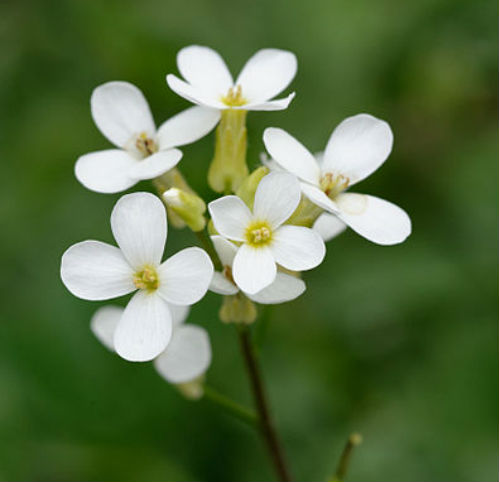
The study was conducted on Arabidopsis, a very close relative of oilseed rape.
The MFT gene stops seeds germinating in the dark or under shady conditions, where their chances of survival would be poor, according to new research from the University of York.
The study, conducted on Arabidopsis, a very close relative of oilseed rape, increases our understanding of one of the most important stages in the life cycle of a plant and may help to improve the seed quality of agricultural crops in the future.
Signals
Scientists have known for some time that two plant hormones play an important role in regulating if and when a seed will germinate - “Abscissic Acid” or ABA blocks germination and “Gibberelins” or GA promotes it.
However, in a breakthrough in our understanding of the mechanism by which these hormones control germination in response to light quality, the researchers have discovered that MFT is the key component that integrates and interprets signals coming from both ABA and GA.
The MFT gene is regulated by light quality and receives signals from both ABA and GA. In dark or shady conditions, it then directs the production of the MFT protein, which regulates germination by switching on a block of genes that prevent growth and switching off another block of genes that promote growth.
Sophisticated mechanism
This prevents a plant from germinating under the wrong conditions such as when there is not enough light to grow.
Professor Ian Graham, corresponding author, from the Centre for Novel Agricultural Products in the Department of Biology at the University of York, said: “This is another great example of how plants have evolved very sophisticated molecular mechanisms to stay in tune with their environment. This allows seeds to survive in the soil for many years so that when the time is right, such as when a tree falls in a forest or soil is turned over, seeds can suddenly spring into action.”
For many plant species the ability of a seed to sense the quality of light can inform it if it is located in direct sunlight, under a canopy of other plants that only allow a certain quality of light to pass through or in the dark, which is often the case when seeds are buried in the soil.
Survival
In wild plant species the ability for seeds to remain dormant even under conditions that would allow them to germinate is important for survival. For crops species, eliminating this dormancy is one of the first traits that has to be dealt with in a plant breeding programme.
Lead author of the work, Dr Fabian Vaistij, from the Department of Biology at the University of York added: “Understanding the molecular genetic basis of how seed germination is controlled will provide new tools to improve seed quality and seedling vigour in developing new crops for the future.”
This work provides some ideas about how light interacts with seeds and germination. Especially where species are known to respond to light during germination. Zoysia turf grass is one of the species that does require light to germinate - if buried, even at shallow depth, germination and subsequent establishment is greatly impaired.
[ adapted from University of York press release 7 August 2018]